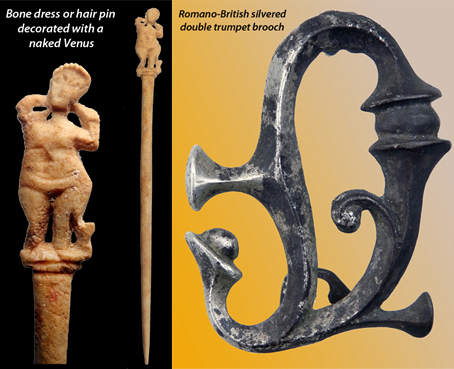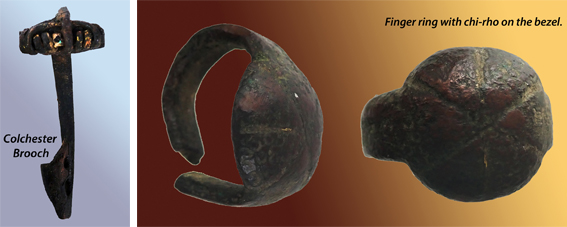If you were lucky enough to find yourself time-travelling back to ancient Rome, you would no doubt notice many Roman women wearing jewellery that we are familiar with today.
Finger rings were among the most popular form of personal jewellery, worn by both men and women. Roman women also adorned themselves with earrings, necklaces and pendants. You would see more unfamiliar forms of body adornment such as the torc, a rigid metal neck ring, and fibulas which were brooches or pins used to fasten and fashion clothing.
To the Romans, jewellery was not just to adorn the body, but it also had very practical functions. Items such as brooches and hairpins kept hair and clothes together; seal stones set into rings placed the mark of the owner on documents. Some necklaces, bracelets and earrings included images of deities or magical symbols, designed to ward off evil and provide protection for the wearer. Romans had a fascination with eroticism and jewellery often contained pornographic images.
Roman Bling in the Abbey Museum
Necklaces composed of strings of small beads were popular. The Abbey Museum has one example of a lovely Roman bead necklace made of coloured glass and semiprecious stones from Israel, dating from the 2nd – 4th century AD. This object is currently in the Museum’s Reserve Collection.

Our Roman collection also includes a beautiful bone object probably from Central Europe, dating from the 2nd or 3rd century AD. It features a small carved naked Venus with her hands up, as if fixing her own hair. It was probably used as either a dress pin or hair-pin.

Among our fibula examples is a delightful Romano-British silvered double trumpet brooch from the late 1st to early 2nd century AD. This was a favourite design with the legions.

On display in the Abbey Museum are several examples of Roman jewellery. They include four glass bangles that date from C350 – 655 AD that were buried as grave goods in a child’s tomb in the Mount Carmel area in Israel. There is also a delightful bronze earring found at the Walbrook in London, England. This example dates to C50 – 200 AD. Earrings are rarely found in archaeological sites. Although examples in gold, bronze and pewter have been found, most are bronze.
Also from the Walbrook is an early example of a Colchester brooch (fibula) which dates to C1 – 75 AD. Made of bronze it is of the type that originated in Gaul and was introduced to Britain by the Belgae (a Celtic tribe) following Caesar’s conquest of Gaul.

Rings on her Fingers ……
There are four examples of finger rings all from London. One from Mark Lane feature the Christian symbol called a chi-rho on the bezel. On the bezel can be seen gold inlay and niello, a black metallic alloy of sulphur with silver, copper, or lead that was used to fill designs that have been engraved on metal surfaces. A rarer ring is a key which is a combined finger-ring and a rotary key for a lever-lock.

New to the Abbey Museum collection in 2021 were five splendid bronze bow fibula and six knee brooches. They are typical Roman brooches, worn over a long period of time. Several have linear incised decoration, and one has traces of gilding. These will make a very nice addition to the Museum’s Roman display when it is upgraded later in 2022.
Visit the Abbey Museum to see these and our many Roman artefacts on display or view our online collection of Bling through the Ages.

